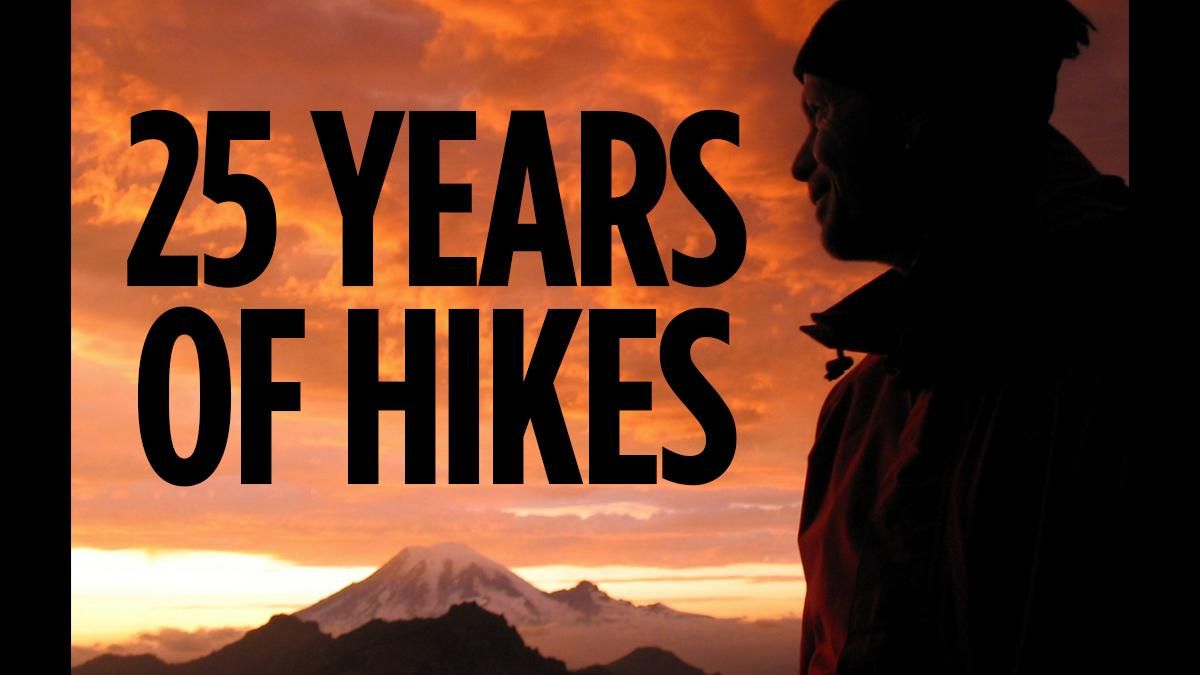‘Brothers of the trail’ celebrate 25-year milestone

A hurricane-force storm hit during one trip. On another, we got lost.
And through 25 years, we’ve suffered through each other’s cranky moods, constant snoring and disgusting bodily functions.
Still, we keep at it. This is the 25th year in a row our loose contingent of hikers has taken a major backpacking trip somewhere in North America.
The locations are literally all over the map, but they always involve a true wilderness experience and a minimum of five days out.
It all started with two people – former Spokane residents Ken Sands and Dale DeLong – who took a trip to Oregon’s Eagle Cap Wilderness in 1993. Sands and DeLong have been together on trips every year since, and five others hikers with Spokane ties have joined in, participating whenever possible.
I have been along on 16 trips, and I have to say, it hasn’t always been easy.
Sands went to the emergency room with a staph infection on his lower leg during a trip to the Ansel Adams Wilderness of California in 2014. DeLong tore the anterior cruciate ligament on his knee during a trip to Olympic National Park in 2006, then suffered an excruciating bursa sac injury on his hip in 2013, again in the Olympics.
“Me and the Olympics have had to break up,” he says now.
Besides the injuries, there have been natural disasters. In 1998, Sands and DeLong were attempting to follow John Muir’s route around Mount Shasta in California when a hurricane-force storm hit.
They huddled through a sleepless night, holding onto the sides of their flimsy tent to keep it from collapsing as buckets of rain fell, soaking them and everything inside. In the morning, the stream they were camped near was a “a raging torrent,” Sands says, and a huge landslide had destroyed a portion of their route.
“We were just beaten,” DeLong says. “We decided we better get out of there before we died.”
Death was also on our minds back in 2001 when we were hiking in Yosemite National Park. As dinner was boiling away on our cook stove, a black bear with two cubs walked into camp, sniffing hopefully.
As we shrieked (not unlike little girls) in surprise, the bear looked at us disdainfully, turned around and walked away, her two cubs following reluctantly. The encounter kept everyone awake for the night, imagining the imminent return of the bear and possibly some of her friends.
We ran into a ranger on the trail the next day and learned that there had been nothing to worry about. He recognized the animal we described.
“She’s a really nice bear,” he insisted.
On another trip, this time to Glacier National Park in Montana, someone had the bright idea to bring “Night Of The Grizzlies” along to read aloud. The book details the deaths of two hikers from bear attacks in Glacier National Park in the 1960s.
Let’s just say nobody slept much on that trip.
Perhaps the biggest day-to-day worry on every trip has been water. Once on the Appalachian Trail, all water sources had dried up except for a barely seeping spring on the side of a mountain shared by grazing cattle. We were forced to filter water on a hillside covered in cow pies.
Apparently, modern-day water filters do work – we somehow survived without getting sick.
For that, we also thank the medicinal properties of single-malt Scotch.
Our hiking tradition involves bringing high-end Scotch on every trip. We carry it in a bizarre purple bottle purchased at Mountain Gear that we have named “Tiki-Mon.”
Scotches come and go, but Tiki-Mon is a constant, filled variously with Oban, Macallan, Glenmorangie, Cragganmore and many others. We’ve brought some 10-year-olds, a few 15-year-olds and the occasional 18-year-old. This year, Sands has rounded up a special 25-year-old that will be making our silver anniversary trip.
Attempts have been made to introduce Canadian whiskey and bourbon. Sands and DeLong are traditionalists, and maintain that Scotch is necessary.
“If it isn’t Scottish, it’s crap,” Sands says in a none-too-convincing highlands brogue. He insists that the peaty, woody flavors remind him of a campfire, making them perfectly suited for our hiking trips.
But seriously, why spend hundreds of dollars on Scotch?
“If you’re going to bother carrying it, you might as well get the good stuff,” he says.
All that booze might explain some notable navigational struggles we’ve faced.
In 2004, we were exploring the Goat Rocks Wilderness in Washington. Our final-day push was to take us 14 miles to our car.
Somehow in our haste to get out, we missed a turn and learned too late that we were on the wrong trail as night fell. We were out of food and had to set up our tents in a no-camping zone along the Pacific Crest Trail near White Pass.
After an uncomfortable, hungry night, we sprinted to the trailhead the next day and gorged on junk food at a convenience store. Those Snickers bars tasted better than steak.
So why continue to go on these trips when we’ve had so many difficult times?
There’s a lot to be said for tradition and friendship. Without our annual backpacking trips, we would have missed too many great sunsets in some of the world’s most special places. We wouldn’t have climbed Mount Cramer in the Sawtooths, wouldn’t have caught 15 trout for a memorable lunch in the Beartooths.
And through it all, we’ve become something more than hiking partners. We’re now brothers of the trail, accepting everyone’s eccentricities, ultimately embracing the best in each other.
John Nelson is a freelance outdoors writer based in Seattle. Follow his blog at skizer.org.